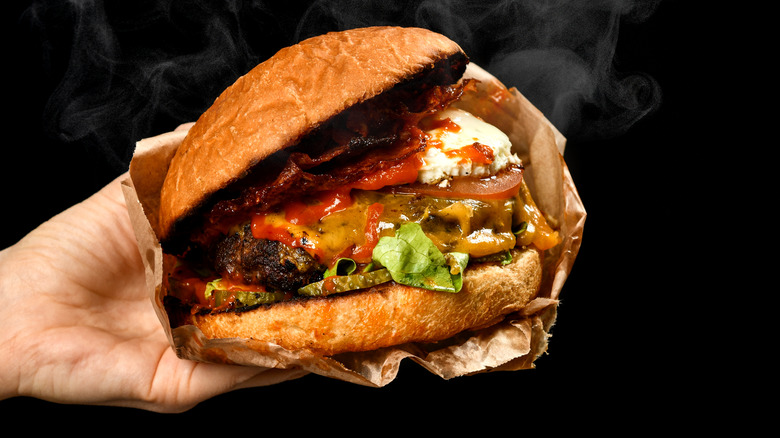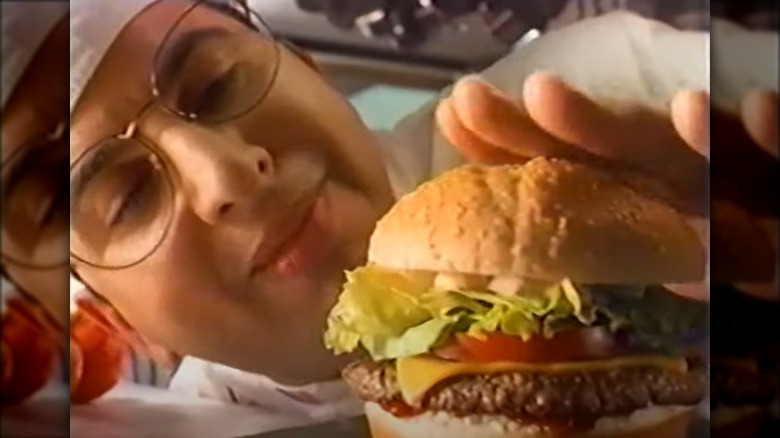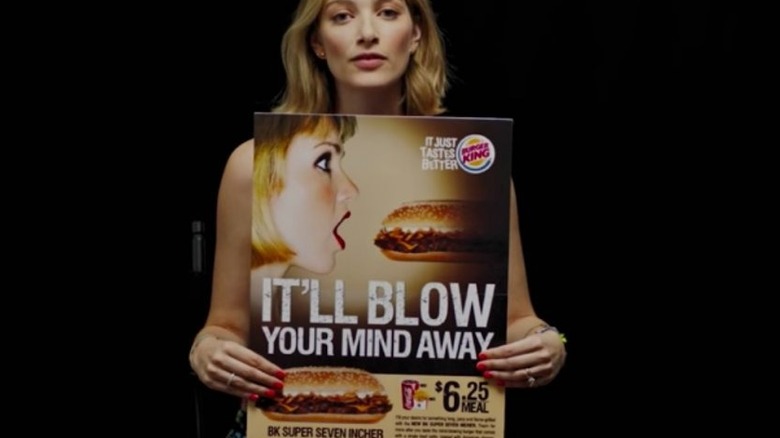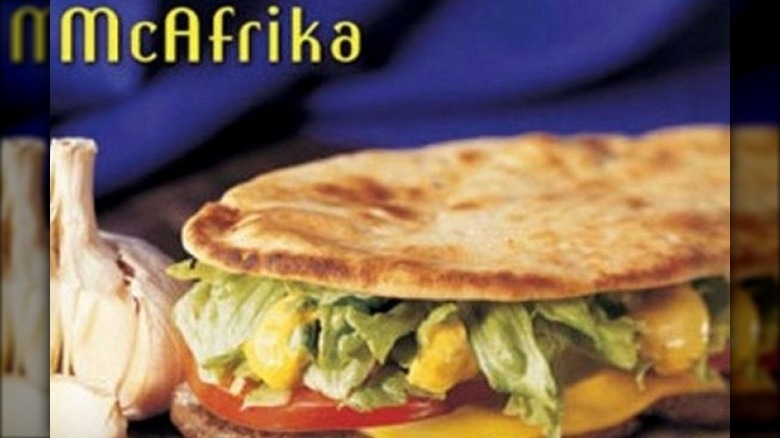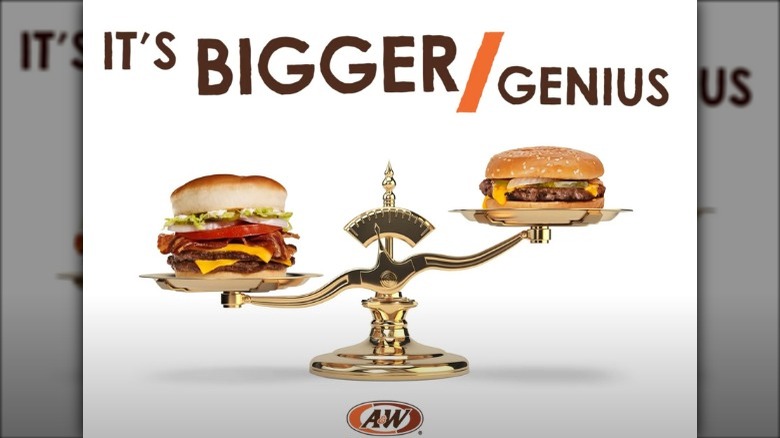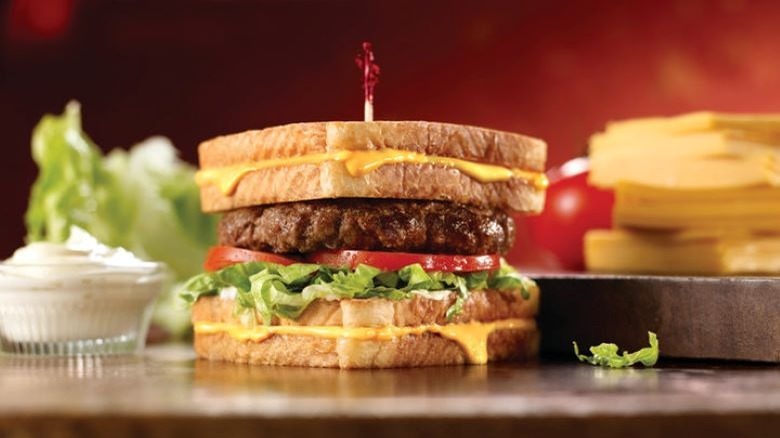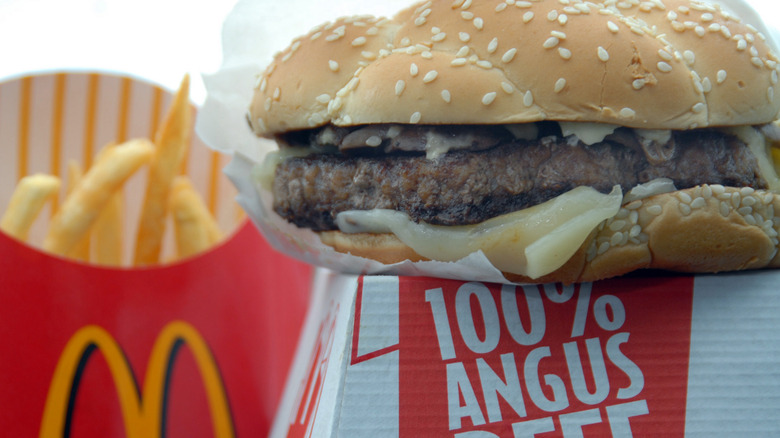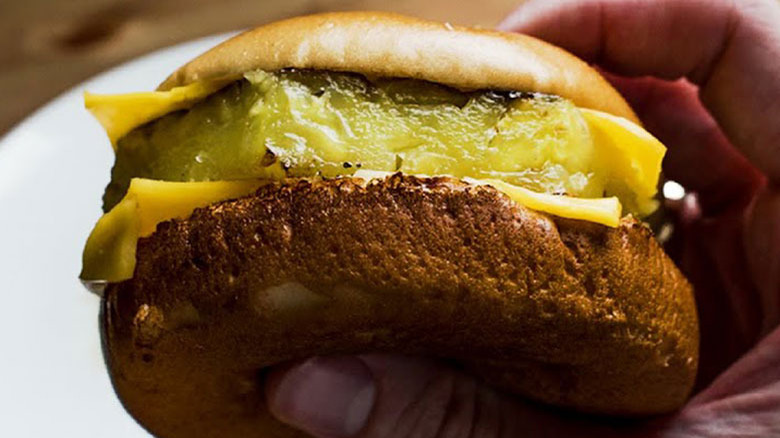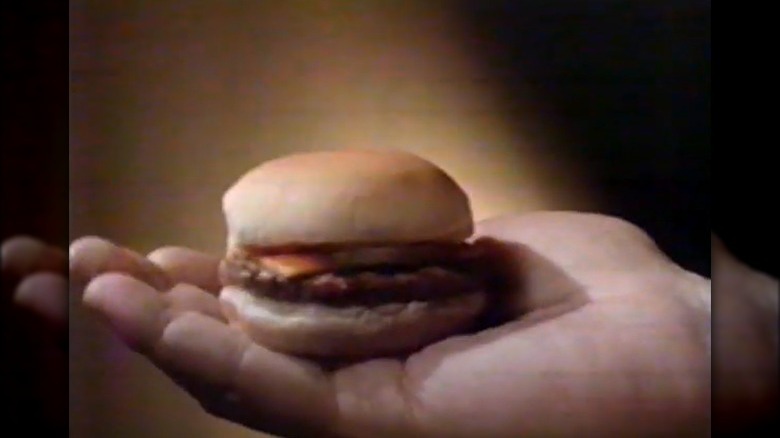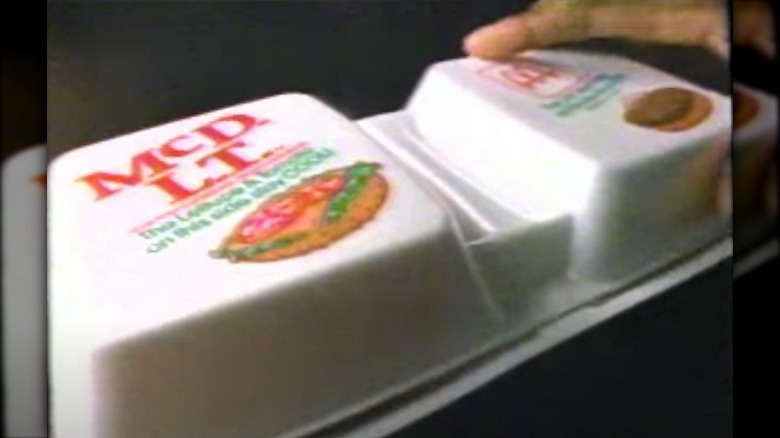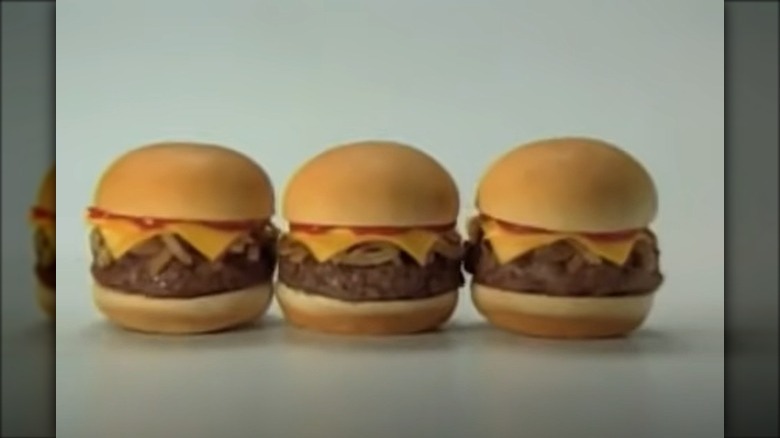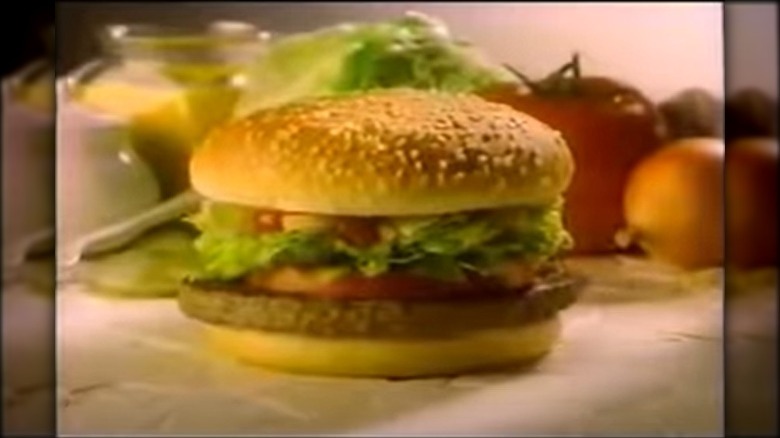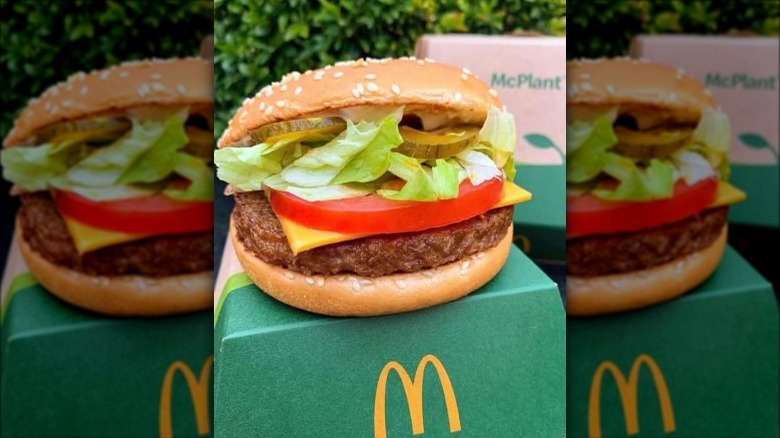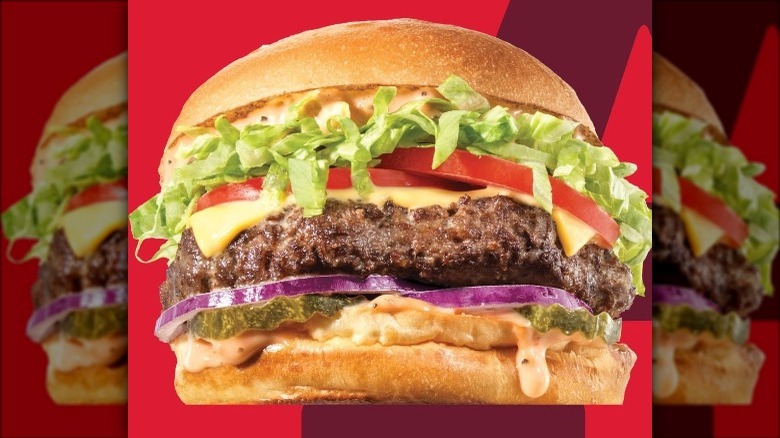13 Fast Food Burgers That Completely Failed
The fast food industry is known for its efficiency and reliability. You get your order quickly, and usually, there are no surprises; the burger is standardized, the fries are consistently equally crisp and salty, and your soda is always a perfect balance of bubbly and sweet. The flavor of your favorite burger is one of the constants in your life, and it never disappoints. You know it will always reach the expected criterion. Although opposite to comfort food, fast food restaurants aim to provide a particular soothing element without any unpleasant surprises.
Can standard and consistency become tiring? Absolutely yes! That's why some of the biggest names in the fast-food industry constantly search for new ways to improve the standard offer. These innovations attract new customers and try to keep loyal fans. Every new menu addition is announced, followed, and reviewed. And as with all things in life, these menu items might reach the highest echelons to become part of the permanent menu, or they might face the horror of complete failure and be cast into the fast food dustbin.
When it comes to burgers, we sometimes think there is no more room for innovation, but strong fast-food performers constantly prove us wrong, and burgers, as the true stars of fast food menus, are often adapted and tweaked. Rather than focusing on some successful examples, we have rounded up a list of complete burger failures that can be used as a lesson of what not to do in the future.
1. McDonald's Arch Deluxe
McDonald's is one of the most successful fast-food franchises. The global empire is present on all continents except Antarctica, and the brilliant logo has long represented decent quality and reliable products. The franchise is a symbol of consistency — if you are unfamiliar with the area and the local offerings, you will surely find at least one McDonald's location, which is always a safe choice. Though the franchise has been a forerunner in the fast-food business, paving the way for numerous fast-food companies that came after, it continually tries to improve its offerings with innovative menu items, but originality sometimes comes at a high price.
The Arch Deluxe was introduced in 1996 as a new item that was supposed to represent the "grown-up" taste. It was a classy burger version that included a beef patty served on a potato roll along with peppery bacon, tomato, lettuce, and a mustard-mayo sauce made with stone ground mustard. The combination sounds great, but McDonald's had many problems with promotion. The Arch Deluxe idea was to represent it as a burger reserved for the sophisticated bunch, which completely missed the spot as most people don't go to McDonald's to look for classy and refined meals.
The promotional campaign not only failed to attract the target, but it was one of the most expensive marketing campaigns to that day, with The New York Times reporting that the company spent around $200 million on advertising.
2. Burger King's Super Seven Incher
Marketing can make or break a new product, especially in the fast-food industry, where there is constant pressure to outdo your competition, either with new products or clever marketing strategies that will set you apart from competitors. Burger King is a fast-food giant with some very successful menu items, such as the legendary Whopper, but the company isn't free of controversy and failed burgers that simply didn't meet expectations.
Using elusive sex references in marketing is no revolution — sex does sell — but as it might be a successful strategy in some other fields, it is a slippery ground in the food business. Burger King learned the lesson the hard way in 2009 when it introduced the Super Seven Incher for the Singapore market. The ad featured a model faced with a seven-inch sandwich, and if the image wasn't suggestive enough, the copy used not-so-subtle terminology, such as "blow," "juicy," and "long." Needless to say, the ad faced a backlash and was criticized by media outlets and marketing experts. The sandwich, which consisted of beef topped with American cheese, crispy onions, and A1 sauce, was simply a victim of an insensitive, sexist ad (via So Good Blog).
Five years after the ad made the headlines, in 2014, the model featured in the main ad claimed that she wasn't aware of how the image would be used. She called for a Burger King boycott, and while it didn't happen, the ad did taint Burger King's image, and the sandwich was removed, never to be seen again (via Fox News).
3. McDonald's McAfrika
The following McDonald's burger failure can easily be described as cringe-worthy. In 2002, the company released a new burger that was supposed to be inspired by African cuisine and tradition, and the genius idea was to call the burger McAfrika. Along with the inappropriate and slightly insulting name, the burger also had utterly bad timing. When it was released, several African countries were fighting severe famine, and introducing a burger named McAfrika by one of the leading and top-grossing franchises was described as "distasteful" and proved to be a total flop (via CNN).
Thankfully, the McAfrika was created just for the Scandinavian market and was only released in Sweden. The sandwich was sold for around $4.25. It consisted of a pita-like bread filled with a beef patty, cheese, salad, and tomato (via The Guardian). Based on the ingredients, it might not have been such a failure, but marketing and placement experts should have known better.
4. A&W's 1/3-Pound Burger
A&W's 1/3-pound burger was introduced in the 1980s by Alfred Taubman. It was a fantastic combination of a sesame bun stacked with a beef patty and topped with cheese, crispy lettuce, ripe tomatoes, and pickles, with the optional topping of crispy bacon. The burger was heavily marketed, but nobody bought it (via A&W Restaurants).
The company investigated why no one wanted it, and the conclusion was that, apparently, many people couldn't work out the math. The idea wasn't bad. The 1/3 pound burger was a rival to McDonald's Quarter Pounder, so named because the patty used a quarter of a pound of meat. A&W opted for a bigger patty with a third of a pound of beef. The price was the same, and it even tasted better than McDonald's version, but the creators' expectations simply didn't meet reality. It seems that many people don't know fractions, and to them, it appears as if 1/3 is less than 1/4. Many were left upset and confused, asking why anyone would pay more for less (via CBC).
Although this burger fail couldn't have been accurately predicted, it caused some damage to A&W. In a 2021 video, the company described the situation with the 1/3 burger, calling it an embarrassing episode. However, it didn't entirely dismiss the larger burger idea, and A&W now offers the 3/9 replacement, a concoction with the same ingredients and a thought-through name.
5. Friendly's Grilled Cheese Burger Melt
In 2010, Friendly's — a franchise that started as an ice cream and dessert shop — shocked the nation with a new menu item called the Grilled Cheese Burger Melt. This decadent dish featured a beef burger patty nestled between two grilled cheese sandwiches that took over the role of the burger bun. The sandwich reportedly had a shocking 1,500 calories, which caused quite a stir among the customers and a lot of negative press by concerned health advocates. The company's representatives argued that Friendly's offers many healthier and nutritionally better options and ensures that detailed nutritional info is available for each menu item (via ABC News).
Despite the company's apparent support for this monster sandwich, it seems that it didn't last long, and the product was soon pulled from all the menus. It is not clear what was the true reason for its downfall. Though total calorie count is often the one to blame, maybe the combination simply didn't sit well among the customers. Sometimes, classics such as burgers and grilled cheese shouldn't be messed with.
6. McDonald's Angus Burger
You've probably seen steaks and burgers labeled as Angus that are promoted as superior and premium varieties. As explained by Steak School, the term Angus relates to Scottish Angus cattle, a sturdier and more muscular breed that produces marbled meat famous for its juiciness and tender texture. Despite its quality, Angus gained international fame when McDonald's first used it for its classic burger patties. Angus burgers were initially a part of the Australian franchise, but they were soon introduced in other countries, including the U.S. market. The American version was first tested in several locations across the country, and in 2009, the decision was made to sell it in all McDonald's restaurants in the U.S. The idea was to offer top quality for $4 apiece, which was far more affordable than other Angus burgers in steakhouses and sit-down burger joints (via ABC News).
Unfortunately, unlike the Australian Angus burger that is still part of the standard offer in regional McDonald's outposts, the American version wasn't successful and was discontinued from the menu in 2013. The decision was made after the cost of beef skyrocketed, and the company decided to look for cheaper meat cuts (via Reuters).
7. McDonald's Hula Burger
McDonald's Hula burger consisted of a grilled pineapple slice topped with cheese and served inside a classic bun. The combination doesn't sound tempting, and as you might've already guessed, it wasn't a big hit among customers. Surprisingly, this meatless burger fail was created by none other than Ray Kroc, a successful businessman and the man who made McDonald's what it is today. The Hula didn't have a long run, but it went down in history as one of the worst McDonald's burger failures — if you even want to call it a burger (via Smithsonian Magazine).
The Hula Burger was invented to compete with Filet-O-Fish. As the story goes, Lou Groen, who was running the first McDonald's in Cincinnati, noticed that his sales plummeted on Fridays because of religious practices. Most people in the area were Catholics and would refrain from eating meat on Fridays (especially during Lent), so they avoided the meat-packed burgers. To increase the sales, Groen quickly thought of a fish sandwich that he later presented to Kroc as a meatless option. But Kroc had something else in mind and thought of the Hula burger as a much better alternative. The deal was to offer it simultaneously and see which performed better.
The result? Have you ever seen a Hula burger on the menu? Reportedly, only six Hula burgers were sold that day, while Groen sold 350 fish sandwiches! In short, the tropical Hula was never resurrected.
8. Burger King sliders
The story of Burger King's sliders wasn't a single attempt and fail venture. The burgers were introduced on several occasions and in different variations, but none proved sustainable and successful. Burger Bundles were the original BK slider, first introduced in 1987. The order included three mini-sized burgers that could be enjoyed as a single portion or as a shared meal. It was a limited offer that never made it to the standard menu.
Next came the Burger Buddies in 1989. These mini cheeseburgers came in pairs with an attached patty that could be broken in two. The slider was again resurrected as a Burger Shot and Breakfast Burger Shot. The latter was a breakfast variation with ham, sausage, or bacon topped with cheese and served in a bun (via Nation's Restaurant News).
What killed these mini burgers? Apparently, their main selling point — the small size. Nation's Restaurant News reported that the small patties slipped through broiler grills. Similar iterations, such as White Castles', worked better as they were steamed on griddles. One of the former employees also commented that making the burgers was a painstaking process as they had to include all Whopper ingredients — lettuce, tomato, mayonnaise, pickles, ketchup, and onions. The comment also mentions that the customers could customize the order, which meant that each burger in the pack could be made with different add-ons, making the preparation process longer and more complicated. Despite the fun size, these burgers were regularly discontinued and are considered one of Burger King's failed experiments.
9. McDonald's McDLT
McDLT was a McDonald's burger failure that fell victim to new packaging. The McDLT — standing for McDonald's lettuce and tomato burger — was introduced in 1984 (via Medium). It was standardly delicious and consisted of a beef patty served on a steamed bun and topped with cheese, lettuce, and tomato. The packaging, however, was revolutionary. McDonald's had an idea to separate the hot element (beef) from the cold ingredients. To make it happen, the burger was served inside a specially designed polystyrene (Styrofoam) container that had two separate sections, one to hold the bottom bun and the beef patty, and the other that had the top half of the bun, together with lettuce, tomato, and cheese. The customer would combine the two and enjoy the hot patty with crisp and fresh veggies. However, the seemingly brilliant plan backfired, mainly due to environmental concerns (via the National Museum of American History).
Polystyrene is excellent at retaining heat, allowing both sides to hold the temperature, but it is also a material that doesn't sit well with environmentalist groups. The burger was sold until the early 1990s, when it was discontinued from all locations. Though environmental issues were quoted as the main reason, Serious Eats suggests that assembling might also have been the issue among the customers. Whatever the reason, the burger never resurfaced.
10. Jack in the Box Mini Sirloin Burgers
The idea of a mini burger always sounds appetizing and it's difficult to resist the impulse to buy tiny food items as they are always cuter than anything of standard size. Having the mini version of your favorite juicy burger means that you can always have one more. They generally tend to be more convenient as they are easily shared and can be devoured in no time. However, the mini burgers that were once sold at Jack in the Box ended up being a rational experiment that has somehow gone wrong.
Jack in the Box minis were introduced in 2009. The campaign featured fun commercials, and the order included three burgers with a sirloin-based patty, American cheese, and grilled onions. The combination was topped with ketchup and served on a tiny bun that resembled a Hawaiian bread roll. The pack was priced at $3.89 (via QSRweb). Despite a reasonable price and delicious ingredients, the minis were soon pulled from the menus during an extensive menu revamp in 2011 (via Foodbeast). The company has never gone public about why it discontinued the product, but based on some reviews, the burgers simply might have not been good enough. The review at Burger Conquest describes the bread bun as dry and claims that the burgers generally lacked flavor. Whatever the reason, it remains one of the slider versions that couldn't survive the unforgiving fast food market.
11. McDonald's McLean Deluxe
McLean was a McDonald's hamburger that never stood a chance. The sandwich was launched in 1991 as a part of McDonald's Deluxe line that also included the failed Arch Deluxe. The McLean was introduced in the 1990s when fat and full-fat products enjoyed a bad reputation. As you may guess from its name, McLean was McDonald's effort to jump on the popular fat-free trend. The company introduced the burger as the healthier option that was supposed to provide classic flavors with less fat and sodium. It was marketed as being "91% fat free" and used carrageenan — a type of red seaweed — and water to bind the meat together (via Marketing Research).
As it turned out, healthier didn't necessarily mean better. In 1993, the McLean was already dubbed as McFlopper and proved to be one of McDonald's failed attempts to create healthier products. Unfortunately, the burger didn't fulfill the expectation, and it just didn't sell. According to a review on The Impulsive Buy, the patty was dry and lacked flavor, which couldn't be compensated with sauces and veggies. The McLean was finally discontinued in 1996.
12. McDonald's McPlant
McDonald's rarely misses the chance to keep up with the current trends, but with plant-based burgers, the company might have arrived late in the game, and when it finally did, the results were slightly disappointing. The first plant-based burgers were tested in 2021 as a limited offer on eight locations in the U.S. The burgers were created with Beyond Meat patties and had classic additions. The campaign was expanded in February 2022 to additional 600 restaurants (via McDonald's). Since then, the company hasn't made any new announcements, and the McPlant is currently not available in the U.S.
It is not clear what happened, but analyst Peter Saleh shared with Restaurant Dive that the McPlant didn't sell as expected during the testing period. Nation's Restaurant News also reports that the future of the McPlant burger in the U.S. is still uncertain. For now, it seems that it is one of McDonald's failed attempts, though the company remains silent, so perhaps it hasn't totally abandoned the idea.
Though the American franchise doesn't offer this plant-based burger, it is still available in several international outposts, including Canadian McDonald's where it is called P.L.T. As described, it includes the Beyond Meat patty, topped with lettuce, tomato, pickles, condiments, and cheddar cheese. It should be noted that McDonald's emphasizes that burgers are not cooked on separate grills and may come in contact with other burgers, meat products, and eggs.
13. Arby's Wagyu Burger
In 2022, Arby's announced that it would launch a new item on the menu, a deluxe burger made with the prized Wagyu beef. The news came as a shock as the franchise is famous for its roast beef specialties, and it never had any burgers included in the standard or limited offers (via CNN). Arby's was faced with an unpleasant surprise following the grand introduction to the menu. What ensued was probably the worst thing a company can experience in the food business. The product that was touted as exclusive, delicious, and premium ended up being a total flop. The reviews that followed were discouraging. The Washington Post had some negative comments about the texture and described the patty as "gummy," while Houston Chronicle noted that the meat was overshadowed by strong flavors from pickles and Arby's burger sauce.
Business Insider also questioned the mere existence of the burger in a franchise that isn't equipped and experienced enough to prepare burgers. The review also mentioned the price — the regular version sold at $6.99, while the Bacon Ranch came up to $7.99 — noticing that the price might be too steep for a fast food burger. The burger was eventually taken off the menu, and the company hasn't made any recent announcements about the fate of its premium burger. Based on the reviews, it would be surprising if it would make a comeback to the standard menu.
